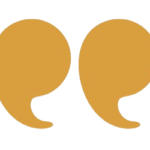Reflexology for Athletes
Hey, busy bees… time to awaken the hive!
Reflexology for Athletes—Put your best foot forward—they said. They just didn’t mention that foot would be cramping, sore, and questioning all of your life choices after leg day. If you’ve ever waddled out of the gym like a baby deer and considered living on the floor for a while… hi, welcome to the club.
Hear me out—reflexology isn’t some woo-woo spa thing with cucumbers on your eyes (although… 10/10 recommend that too). It’s legit science + ancient wisdom = your new post-workout bestie. This blog isn’t here to sell you magic. But it will show you how pressing a few points on your feet (yes, really) can help you recover faster, boost performance, and possibly cry less in the shower after a brutal HIIT session.
So grab your foam roller, pretend you’re paying attention to your post-workout cooldown, and let’s get into the weirdly satisfying world of reflexology. You’ll thank me when your legs stop plotting revenge.
Can Reflexology Unlock an Athlete’s True Potential?
Did you know that pressing specific points on your feet can help reduce muscle soreness, speed up recovery, and enhance overall athletic performance?
Athletes push their bodies to the limit, leading to:
- Muscle fatigue
- Joint pain
- Injuries
While traditional recovery methods like massages, ice baths, and physiotherapy are common, one ancient technique is gaining popularity in the sports world—Reflexology.
Backed by science and centuries-old wisdom, reflexology is a natural, non-invasive therapy that stimulates pressure points on the feet, hands, and ears, helping athletes:
- Recover faster (because who enjoys limping for 3 days?)
- Improve endurance (without another scoop of pre-workout)
- Prevent injuries (goodbye surprise muscle strains)
In this blog, we’ll explore:
- How reflexology can transform an athlete’s recovery game
- Scientific studies proving its benefits
- A simple, step-by-step guide to actually make it part of your training routine
Basically, if your body’s been begging for a better way to bounce back—you’re in the right place.
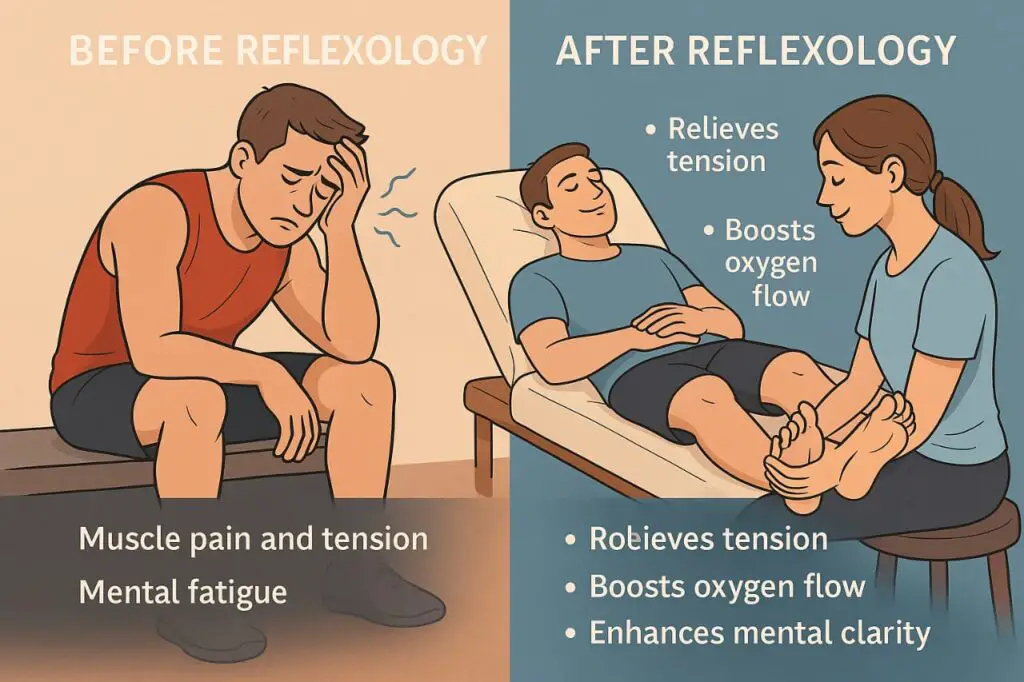


1. What is Reflexology? A Quick Overview
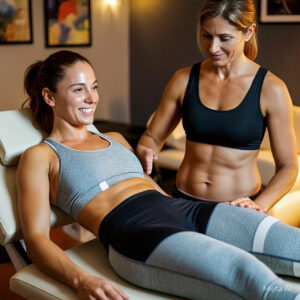
Reflexology is a form of therapy that applies pressure to specific reflex points on the feet, hands, and ears. Each of these points corresponds to different organs, muscles, and systems in the body.
By stimulating these areas, reflexology promotes:
- Increased blood circulation
- Reduced muscle tension & soreness
- Faster recovery from sports injuries
- Enhanced energy levels & stamina
2. Science-Backed Benefits of Reflexology for Athletes
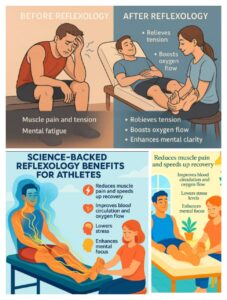
Numerous studies confirm that reflexology can be a game-changer for athletic performance. Let’s explore the biggest benefits:
2.1. Reduces Muscle Pain & Speeds Up Recovery
A 2019 study published in the Journal of Sports Science & Medicine found that foot reflexology significantly reduced muscle pain after intense workouts.
- Reflexology stimulates endorphin release, acting as a natural painkiller
2.2. Improves Blood Circulation & Oxygen Flow
Better circulation means more oxygen and nutrients reach the muscles, speeding up tissue repair.
A study from the National Institutes of Health (NIH) found that athletes who received reflexology had better blood flow and quicker recovery than those who didn’t.
2.3. Lowers Stress & Enhances Mental Focus
- Reflexology regulates cortisol levels, reducing stress and anxiety.
Harvard Medical School reports that stress management directly impacts sports performance, making reflexology an essential tool for athletes.
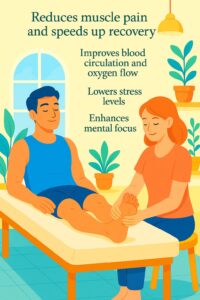
3. Key Reflex Points Every Athlete Should Know
Athletes can benefit from specific reflex points that target muscle recovery, energy, and injury prevention.
3.1. Foot Reflex Points (For Muscle Recovery & Joint Health)
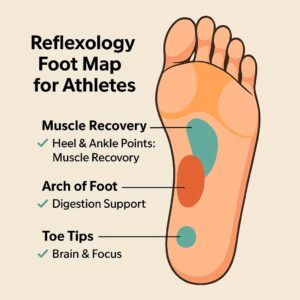
- Heel & Ankle Points: Relieve foot pain & strengthen lower legs
- Arch of Foot: Supports digestion, helping with better nutrient absorption
- Toe Tips: Stimulate brain activity & improve focus
3.2. Hand Reflex Points (For Strength & Mobility)
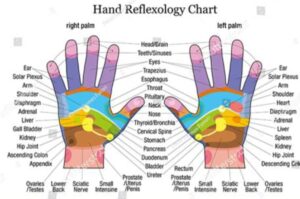
- Palm Center: Boosts blood circulation
- Finger Joints: Reduces stiffness & enhances grip strength
3.3. Ear Reflex Points (For Stress Relief & Nervous System Balance)
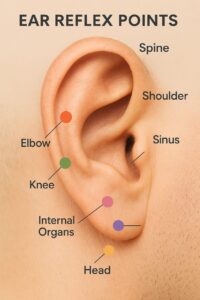
- Upper Ear: Reduces tension headaches
- Lower Lobe: Calms nerves & promotes relaxation
4. How to Integrate Reflexology into an Athlete’s Routine

4.1. Pre-Workout Stimulation (5-10 Minutes)
- Apply gentle pressure on foot and hand reflex points to activate muscles
- Focus on ankle & arch areas for flexibility
- Deep breathing to enhance blood flow
4.2. Post-Workout Recovery (10-15 Minutes)
- Press on heel & palm points to relax muscles
- Use a foot roller or acupressure mat for added benefits
- Massage toe tips & ear reflex points for stress relief
4.3. Professional Reflexology vs. DIY Methods
- Professional Reflexology: Recommended 1-2 times a month for deep healing
- DIY Reflexology: Daily use of foot rollers, acupressure balls, or reflexology charts
Pro Tip:
No fancy spa needed. My ride-or-die for post-leg-day survival? This Foot Massage Roller that targets those “why do my calves hate me” knots. Perfect for DIY reflexology sessions before or after training.
Because your feet deserve VIP treatment.
5. Combining Reflexology with Other Recovery Techniques
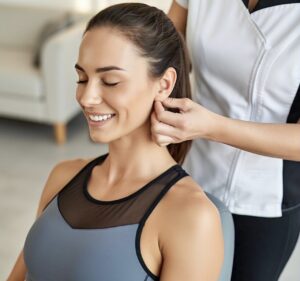
For maximum impact, athletes should combine reflexology with:
- Sports Massage: Reflexology enhances massage benefits
- Cryotherapy: Cold therapy + reflexology = faster muscle repair
- Hydration & Nutrition: Helps eliminate toxins & speeds up recovery
- Sleep Optimization: Reflexology before sleep improves recovery
Pro Tip:
Go full zen warrior with this Acupressure Mat & Pillow Set. Lay back, breathe, and let those tiny spikes work reflexology magic from your feet to your shoulders.
It’s like sending your whole body an apology note after HIIT.
Beginner-friendly hack? These Reflexology Socks have all the pressure points mapped out for you. Just put them on and press where it hurts most.
Zero guesswork, maximum chill. Your new recovery BFF.
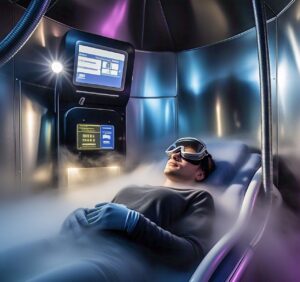
6. Expert Opinions & Athlete Testimonials
Expert Opinions:
Athlete Testimonials:
Why Every Athlete Should Try Reflexology?

- Boosts recovery
- Reduces muscle pain
- Improves flexibility
- Enhances mental focus
Reflexology for athletes isn’t just about relaxation—it’s a science-backed, results-driven method to help you train harder and recover smarter.
By integrating reflexology into their recovery routine, athletes can perform better, train harder, and stay injury-free.
A study published in The Open Sports Sciences Journal examined the acute effects of foot reflexology massage (FRM) on arterial pulse wave and cardiac-related modulation after repeated sprint ability (RSA) and YOYO intermittent exercises. The findings suggest that FRM can positively influence autonomic function post-exercise in collegiate athletes.
Pro Tip:
If you want the five-star reflexology experience at home, this Heated Electric Foot Massager is it. Melt away soreness, boost circulation, and tell leg cramps to go find another victim.
FAQs
can reflexology u003cemu003ereallyu003c/emu003e help athletes recover faster?
Absolutely! Reflexology for athletes isn’t just a feel-good foot massage—it targets pressure points linked to your muscles, improving blood flow, reducing soreness, and helping you bounce back faster after workouts. It’s like sending your body a reset signal—without the ice bath trauma.
Is reflexology a legit recovery tool for athletes—or just another wellness buzzword?
Fair question! But nope, this one’s not all fluff. Reflexology for athletes is backed by research that shows reduced muscle pain, better circulation, and improved physical performance. It’s been around for centuries—because it actually works.
Can reflexology u003cemu003ereallyu003c/emu003e prevent injuries, or is that wishful thinking?
It’s more than wishful thinking—it’s smart strategy. By improving circulation and reducing tightness, reflexology helps your body stay balanced and flexible, which = fewer injuries. Think of it as preventative maintenance… but for your feet.
How often should athletes use reflexology to see real results?
Consistency is key! Most athletes feel the difference with 3–4 sessions a week (even short DIY ones). You can also go for a pro session once or twice a month for that deep recovery magic. Your muscles will thank you. Daily if you’re sore? Chef’s kiss.
Can reflexology replace sports massage or physiotherapy?
It’s not either/or—it’s both/and. Reflexology u003cemu003eboostsu003c/emu003e the benefits of other recovery tools. Use it u003cstrongu003ewithu003c/strongu003e your regular routine (like sports massage or cryotherapy), and you’ll get better, faster results. Basically, it’s the secret sauce for natural recovery for athletes.
Do I need a reflexologist, or can I DIY this at home?
Great news: You don’t need a full spa day to get the benefits. Reflexology for athletes can be totally DIY—think foot rollers, acupressure mats, or just pressing the right points with your hands. But if you u003cemu003ecanu003c/emu003e get a pro treatment? Treat yourself. You earned it.
“If the shoe fits…”—can reflexology help with foot pain from athletic training?
Totally! foot reflexology for runners is literally made for this. It helps reduce tension and inflammation in the foot and ankle area, which are usually overworked in athletes. So whether you’re running, lifting, or just living in your gym shoes, reflexology’s got your back… or, well, your soles.
What’s the best natural recovery for athletes who train daily?
Reflexology is hands-down the best u003cstrongu003enatural recovery for athletesu003c/strongu003e. It boosts blood flow, relaxes muscles, and clears tension. Many swear by natural recovery for athletes over meds or machines. If you want fast, low-effort healing, go for natural recovery for athletes like reflexology.
Is foot reflexology for runners actually helpful?
Absolutely. u003cstrongu003eFoot reflexology for runnersu003c/strongu003e targets sore spots, reduces pain, and speeds up recovery. Many runners use foot reflexology for runners pre- and post-run. It’s easy, effective, and totally underrated. If your feet could talk—they’d beg for foot reflexology
Got more questions? Drop them in the comments!
So, what have we learned today, team? That reflexology for athletes isn’t just foot talk—it’s real talk. And hey, when our ancestors were out there rubbing their feet and talking about energy flow—they weren’t just being dramatic. Science now says they were kinda onto something. And I’m not one to argue with centuries of barefoot wisdom and actual research.
Plus, let’s be honest—if your feet could talk, they’d probably scream: “Please stop ignoring me and book that reflexology sesh already!” So next time you’re limping off the treadmill or icing your knees like you’re 90, remember:
There’s a pressure point for that.
PSA for all athletes who think reflexology is enough: Your feet might be relaxed, but your muscles still need fuel. Don’t sleep on the real MVP—this ultimate athlete’s nutrition plan. Think of it as reflexology’s power partner in crime.
Try it, feel it, flex it—and let your recovery game glow up, naturally. Catch you later, alligator
Buzzing off for now—BBZZ, Awakening Hive
Description:
Psst! Just so you know—some links in this post are affiliate links, which means I may earn a small commission if you decide to buy (at no extra cost to you). I only recommend stuff I’d genuinely want in my own calm-down toolkit. Because you deserve better than a cluttered mind.


